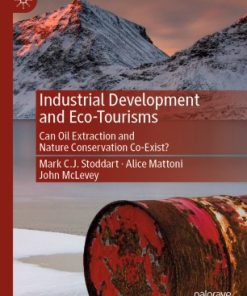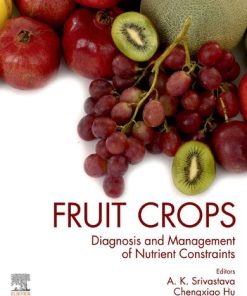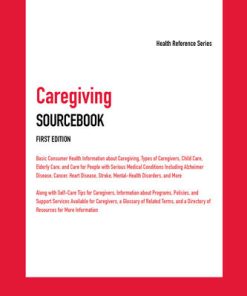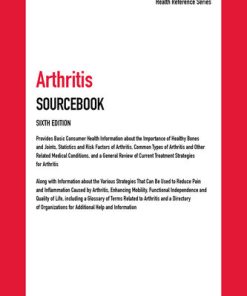(Ebook PDF) Industrial Oil Crops 1st Edition by Thomas Keon, Douglas Hayes, David Hildebrand, Randall Weselake 0128053852 9781893997981 9780128053850 full chapters
$50.00 Original price was: $50.00.$25.00Current price is: $25.00.
Industrial Oil Crops 1st Edition by Thomas McKeon, Douglas G. Hayes, David Hildebrand, Randall Weselake – Ebook PDF Instant Download/DeliveryISBN: 0128053852, 9781893997981, 9780128053850
Full dowload Industrial Oil Crops 1st Edition after payment.
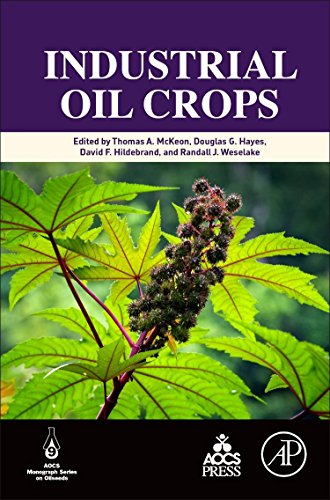
Product details:
ISBN-10 : 0128053852
ISBN-13 : 9781893997981 9780128053850
Author: Thomas McKeon, Douglas G. Hayes, David Hildebrand, Randall Weselake
Industrial Oil Crops presents the latest information on important products derived from seed and other plant oils, their quality, the potential environmental benefit, and the latest trends in industrial uses. This book provides a comprehensive view of key oil crops that provide products used for fuel, surfactants, paints and coatings, lubricants, high-value polymers, safe plasticizers and numerous other products, all of which compete effectively with petroleum-derived products for quality and cost. Specific products derived from oil crops are a principle concern, and other fundamental aspects of developing oil crops for industrial uses are also covered. These include improvement through traditional breeding, and molecular, tissue culture and genetic engineering contributions to breeding, as well as practical aspects of what is needed to bring a new or altered crop to market. As such, this book provides a handbook for developing products from renewable resources that can replace those currently derived from petroleum. Led by an international team of expert editors, this book will be a valuable asset for those in product research and development as well as basic plant research related to oil crops.
Industrial Oil Crops 1st Table of contents:
Chapter 1. Introduction to Industrial Oil Crops
Introduction
What Is an Industrial Oil Crop?
Why Do We Care About Industrial Seed Oils?
Where Do Industrial Oils Come From?
How Are Industrial Oil Crops Improved?
Genetic Engineering of Fatty Acid Biosynthesis
Genetic Engineering of Oil Biosynthesis
Technical and Social Issues Related to Plant Genetic Engineering
Conclusions
Chapter 2. Biodiesel and Its Properties
Introduction
Historical Background
Biodiesel Production
Biodiesel Analysis
Biodiesel Properties
Disclaimer
Chapter 3. Polymeric Products Derived From Industrial Oils for Paints, Coatings, and Other Applications
Introduction
Preparation of New Monomers From Unsaturated and Polyunsaturated Fatty Acids
Preparation of Polyols From Unsaturated Fatty Acids
Conjugated Oils as Coatings: Direct Free Radical Polymerization
Cationic Polymerization of Unsaturated Oils
Metathesis Polymerization of Unsaturated Oils
Vulcanization of Polyunsaturated Oils
Estolides and Polycondensation Products From Hydroxy Fatty Acids
Conclusions
Chapter 4. Castor (Ricinus communis L.)
Introduction
Agronomy
Castor Breeding
Ricin and RCA
Ricin Detection
Castor Seed Allergen
Processing
Castor Oil Biochemistry and Molecular Biology
Castor Oil Production and Applications
Miscellaneous Uses of the Castor Plant
Summary
Chapter 5. Brassica spp. Oils
Introduction
Characteristics of Brassica Oilseed Species and Industrial Uses of Their Oils
Production of Brassica Oilseed Species
Breeding of Brassica Oilseed Species
Brassica Seed Oil as a Feedstock for Biodiesel Production
Chemical Modification of Brassica Oils for Other Industrial Applications
Genetic Engineering of Brassica Oilseed Species to Produce Industrial Oils
Closing Comments
Chapter 6. Flax (Linum usitatissimum L.)
Introduction
Differentiation of Fiber Flax and Oilseed Flax
Flax Genetics and Breeding
Flaxseed Oil
Closing Comments
Chapter 7. Crambe (Crambe abyssinica)
Origin and History
Crambe Botany
Seed Composition
Crambe as an Industrial Oil Crop
Crambe Cultivation
Genetic Resources and Conventional Breeding
Crambe Improvement Using Gene Technology
Future Perspectives
Chapter 8. Camelina (Camelina sativa)
Introduction
Camelina Production as an Oil Seed Crop
Camelina Oil Composition and Stability
Camelina Meal Quality and Uses in Livestock
Antinutritive Compounds in Camelina Meal
Camelina Genome
Agrobacterium-Mediated Transformation of Camelina
Outcrossing Potential for Camelina
Genetically Engineering Camelina Fatty Acid Composition
Increasing the Agronomic Potential of Camelina
Conclusion
Chapter 9. Coconut (Cocos nucifera)
Introduction
Botany, Cultivation and Production
Yields and Production
Coconut Oil
Emerging Applications
Premium Grade Monolaurin and HIV/AIDS
Chapter 10. Tung (Vernicia fordii and Vernicia montana)
Introduction
The History of Tung in the United States: The Tung Belt
Research on Tung
Tung’s Demise in the United States
Industrial Utilization of Tung Oil
Tung Trees Meet the Molecular Age
Conclusions
Chapter 11. Emerging Industrial Oil Crops
Introduction
Chapter 11.1. Chia (Salvia hispanica L.)
Chapter 11.2. Cuphea (Cuphea spp.)
Chapter 11.3. Hemp (Cannabis sativa L.)
Chapter 11.4. Jatropha (Jatropha curcas L.)
Chapter 11.5. Jojoba (Simmondsia chinensis)
Chapter 11.6. Lesquerella (Physaria spp.)
Chapter 11.7. Meadowfoam (Limnanthes alba)
Chapter 11.8. Pennycress (Thlapsi spp.)
Chapter 11.9. Perilla (Perilla frutescens)
Chapter 11.10. Pili (Canarium ovatum)
Chapter 11.11. Epilogue
Chapter 12. Successful Commercialization of Industrial Oil Crops
Introduction
Grow
Make
Sell
Conclusion
Chapter 13. Applications of Doubled Haploidy for Improving Industrial Oilseeds
Introduction
DH Methodology
Brassica Species
Other Cruciferous Species
Apiaceae Species
Compositae Species
Other Species
Conclusion
Chapter 14. Genetic Transformation of Crops for Oil Production
Introduction
Multipurpose and Technical Oils
Oils—An Essential Dietary Requirement for Humans
Plant Oils as an Alternate to Petroleum—Biofuels
Oilseed Crop Platforms for Animal Feedstock
Conventional Methods of Oil Crop Improvement
Recombinant DNA Technology—Methods and Tools for Obtaining Transgenic Plants
Genetic Transformation of Oil Crops for Sustainable Development
Soybean
Oil Palm
Rapeseed
Castor
Sunflower
Cotton
Flax
Maize
Jatropha
Camelina
Transgenic Oil Crops—Means and Challenges
Development of Clean Marker-Free Transgenic Plants
Targeted Genome Engineering for Locus-Specific Modifications
The Debate on GM Crops
Oil Crops of the Future
Conclusion
Chapter 15. Engineering Oil Accumulation in Vegetative Tissue
Introduction
Overview of Acyl-Lipid Metabolism in Developing Seeds and Leaves
Transcription Factors Promote Increased Triacylglycerol Production in Vegetative Tissue
Increasing the Availability of Building Blocks for Triacylglycerol Assembly by Modifying Enzyme Action
Increasing Triacylglycerol Assembly
Decreasing Triacylglycerol Turnover
Multigene Strategies for Increasing Triacylglycerol Content in Vegetative Tissue
Enriching Leaf Triacylglycerol in Industrially Useful Fatty Acids
Engineering C4 High-Biomass Plants to Produce Triacylglycerol in Vegetative Tissue
People also search for Industrial Oil Crops 1st:
what are examples of oil crops
what are industrial crops
industrial crops examples
industrial oils food
industrial crops definition
You may also like…
Politics & Philosophy - Social Sciences
Biology and other natural sciences - Plants: Agriculture and Forestry
Breeding oilseed crops for sustainable production : opportunities and constraints 1st Edition Gupta
Reference - Writing
Biology and other natural sciences - Plants: Agriculture and Forestry
Fruit Crops: Diagnosis and Management of Nutrient Constraints 1st Edition Anoop Kumar Srivastava
Uncategorized
(Ebook PDF) Caregiving Sourcebook 1st edition by Kevin Hayes 0780818113 9780780818118 full chapters
Politics & Philosophy



